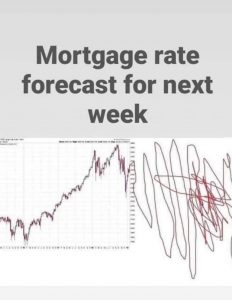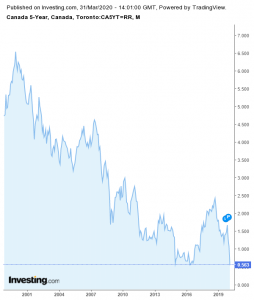Many of our clients, their family and friends are looking for information and so we hope you find the following to be helpful.
If you have any questions about the following your Jencor Advisor is available and we will do our best to answer questions, find answers and anything else we can do for you.
Each lender has a separate telephone number and or email address for clients to use to make contact and obtain information regarding payment deferral, skip a payment, miss a payment options.
Please prepare yourself prior to your call or email with the following information:
At this time, due to high call volumes you may want to e-mail your lender, though I personally prefer to speak with a real live human.
- Be prepared for the possibility of questions on any loss of income you are experiencing or are about to experience.
- Have your Mortgage statement handy as it contains your account number and other pertinent information.
- You may be asked about your current assets and income as well all expenses.
Banks’ Customer Service phone numbers to call if and when you want to explore their mortgage relief programs.
• ATB Financial 1-800-332-8383
• B2B Bank 1-866-684-5637
• BMO 1-877-895-3278
• Bridgewater Bank 1-866-243-4301
• CIBC 1-800-465-2422
• CIBC FirstLine – 1.877.454.9030
• Canadiana 1-877-315-1633
• CFF Bank 1-855-767-3031
• Chinook Financial 403-934-3358
• CMLS Financial 1-888-995-2657
• Connect First 403-736-4000
• Equitable Bank 1-888-334-3313
• First National Financial 1-888-488-0794
• First Calgary Financial CU 403-736-4000
• Haventree Bank 1-855-272-0051
• HSBC 1-888-310-4722
• Home Trust 1-855-270-3630
• HomEquity Bank 1-866-522-2447
• ICICI 1-888-424-2422
• Lendwise 1-866-675-7022
• Manulife 1-855-518-7546
• Marathon Mortgage Corp 1-855-503-6060
• MCAP 1-800-265-2624
• Merix 1-877-637-4911
• National Bank 1-800-361-9522
• Optimum Mortgage 1-866-441-3775
• PC Financial 1-888-723-8881
• Scotiabank 1-866-472-6842
• Servus 1-877-378-8728
• RFA (formerly Street Capital 1-877-416-7873
• Radius Financial 1-866-550-8227
• RMG 1-866-809-5800
• RBC Royal Bank of Canada 1-866-809-5800
• TD Canada Trust 1-866-222-3456
• Tangerine 1-888-826-4374
Lenders with online application options
B2B Bank – 1.866.684.5637 / b2bbank.com/COVID19
Bridgewater Bank – 1.866.243.4301 / Outside of Canada 403.817.7000 / customer.experience@bridgewaterbank.ca
CMLS – 1.888.995.2657 / service@cmls.ca
Equitable Bank – 1.866.407.5859 / customerservice@eqbank.com
First National Financial – 1.888.488.0794 / accounts@firstnational.ca (include name/ mortgage number / property address and question)
Home Trust – 1.855.270.3630 / 416.777.5820 / homehelps@trust.ca
ICICI Bank– 1.888.424.2422 / Customercare.ca@icicibank.com
Merix / Lendwise – 1.877.637.49111 / customerservice@merixfinancial.com
Manulife – 1.855.518.7546 / banksales@manulife.com
MCAP – 1.800.265.2624 / MYMCAP Portal
Optimum/CW Bank – 1.866.441.3775 / customer.service@cwbank.com
RMG Mortgages – 1.866.809.5800 / mortgagesupport@rmgmortgages.ca
Scotiabank 1.800.472.6842 https://www.scotiabank.com/ca/en/personal/scotia-support/latest-updates/scotia-support/mortgage-payment-relief.html
TD Canada Trust- 1.866.222.3456 – https://www.td.com/ca/en/personal-banking/covid-19/?fbclid=IwAR1sNUkd8KUISgsRgVtREgfQLaBXj6d-DhXJvOm8r2lAe6JsnUEnO8IpcVQ
Our Personal Experiences and those of some clients:
TD Bank:
We personally got 6-month payment deferrals on 6 TD mortgages, 2 of which are Flexline re-advanceable mortgages (those have HELOCS attached to them, similar to Scotia Step re-advanceable mortgages).
The bank person was on loan from the branch support dept to their mortgage deferral program. She was fantastic and we told her so. From all the calls she is losing her voice but soldiering on in a very helpful and cheery way.
No questions were asked about qualifying us as to why we needed this.
They are not deferring the interest costs on HELOCS, as one should expect. And even though we have lots of access to capital from those HELOCS there was no suggestion at all about our ability to access those HELOCS to fund our mortgage payments.
The interest deferred is capitalized to the mortgage balance owing, and at the end of the current term they will, upon renewal, re-set the payments to allow for the repayment of that deferred interest and deferred mortgage pay-down over the entire remaining amortization.
This is the most generous way a bank could do this. And, we will have the option of paying off any or all of the deferred amounts to reduce the balance and therefore the payments on the new term.
Scotiabank:
Non-primary residences, including rentals, vacation/cottage properties, are now eligible for the 6-month mortgage payment deferral program (to a maximum of three non-primary properties per borrower). I have advised clients with more than 3 Scotia mortgages to push back, the argument being that since Scotia originally provided you with ‘x’ number of mortgages, and since Scotia has renewed those mortgages over the intervening years, they have an obligation to offer deferrals on all your Scotia mortgages. Other banks are not limiting the number of mortgages they will allow payment deferrals on.
First Calgary Financial (Credit Union):
We personally got a 3-month payment deferral on one of our rentals properties.
No questions were asked about qualifying us as to why we needed this – their deferrals are granted without question.
The interest deferred is capitalized to the mortgage balance owing, and at the end of the current term they will, upon renewal, re-set the payments to allow for the repayment of that deferred interest and deferred mortgage pay-down over the entire remaining amortization.
This is the most generous way a bank could do this. And, we will have the option of paying off any or all of the deferred amounts to reduce the balance and therefore the payments on the new term
Royal Bank of Canada:
RBC commercial mortgages will implement interest only payments for six months. No questions asked. You cannot do it for fewer than 6 months. The principle payment is tacked on to the end of your amortization.
The following information is taken from a Money Coaches Canada article
Should I Defer my Mortgage Payments?
According to Vancouver based mortgage broker Marci Dean, each lender has created a policy around the deferral program. In some cases, the lenders default to a 6-month deferral and it’s up to the borrower to call/email to stop the deferral. For other lenders, it is month to month. In that case, borrowers will login or email their request to skip payment the following month.
Again, depending on the lender, interest will either be added to payments after the deferral or it will be added to the mortgage balance at the end of the term which will result in larger payments later.
Here are a few examples from bank lenders:
TD: Payments will be adjusted automatically at the start of your next term or, if you change anything else before renewal, at that time, to ensure your mortgage is paid off at the end of your original amortization period.
Scotiabank: A mortgage payment deferral means that payments are skipped for up to 6 months, during which interest is accrued to the outstanding balance of the mortgage. The amount is incorporated into the monthly payment when mortgage payments resume at the end of the deferral period.
CIBC: The interest that accrues during the deferral period will be added to the principal balance of your mortgage to provide you with immediate payment relief while experiencing temporary hardships. As a result, once payments resume, you will continue to pay interest on the principal, and your payments may increase after the deferral period.


